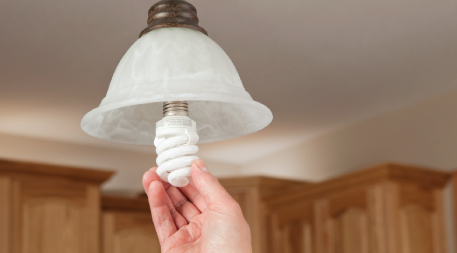April 25, 2013 — When it comes to reducing fossil fuel use, increasing energy efficiency has obvious appeal: help the environment, boost energy security and save money, too — without the grit-your-teeth-and-get-by-without attitude of 1970s-style energy conservation. Not only that, but boosting the amount of work we squeeze out of each kWh or Btu is the cheapest, most plentiful and fastest tool we have for moving toward a more sustainable energy future. Many efficiency fixes, experts point out, save so much it would be foolish to ignore them.
Americans have made some moves to enhance efficiency: Per capita energy use has fallen by 14 percent in the past three decades in the U.S., and since 1970 the energy necessary to create each dollar of GDP has been halved. Still, based on comparisons with other countries, that figure could well be halved again. And a report a few years ago by the National Academies suggested Americans could reduce energy use 17 to 22 percent by 2020 and 25 to 31 percent by 2030 if we adopt existing and emerging energy efficiency technologies.

Why is energy efficiency such a tough sell? Human behavior, bureaucracy and a lack of capital all get in the way of reaping the economic and environmental gains it has to offer. ©iStockphoto.com/BanksPhotos
Why isn’t this “low-hanging fruit,” as efficiency is invariably called, being plucked? In the face of logic, incentives, regulatory mandates, new efficiency-enhancing technologies and even moral imperative, consumers remain surprisingly ambivalent about, or even muddled by, the options. Part of the problem is how human behavior often stymies better intentions. Another factor is the more banal reality that bureaucracy and a lack of capital can slow any revolution in its tracks, no matter how cost-effective it might be.
“The potential to reduce the energy we waste is compelling,” Kenneth J. Ostrowski, a senior partner at global management consulting firm McKinsey & Co., said in announcing a 2009 study of the U.S. economy. “However, to unlock the full potential, we need a coordinated national and regional strategy to overcome barriers and scale up the deployment of existing energy efficiency technologies.”
Consider the Value
First, take a step back and consider the value efficiency offers. In an influential study published in 2008, psychologists Gerald T. Gardner and Paul C. Stern assessed the impact of around 30 steps households could take toward increasing their energy efficiency, all using currently available technologies. The sum of the efforts, they found, could cut U.S. home energy use by up to 30 percent. Since residences account for nearly one-third of total energy use, these savings could trim 11 percent from overall U.S. energy consumption.
In its 2009 report, McKinsey identified waste and other savings opportunities amounting to 23 percent of the U.S. energy pie, excluding the transportation sector. The cost of energy-saving upgrades, McKinsey found, could be entirely paid for within a few years by the resulting reduction in spending on energy. For a total investment of $520 billion, the U.S. could trim some $1.2 trillion from its energy costs by 2020. “Energy efficiency should be elevated to a national priority,” said Ostrowski.
In his 2010 book Invisible Energy, Goldstein estimated savings of 80 percent are possible by 2050 if we include technologies now in the pipeline, as well as those likely to be introduced given what we know about the pace of innovation.
The savings would be greater still if the calculation considers future innovation, says David Goldstein, energy program co-director for the Natural Resources Defense Council. In his 2010 book Invisible Energy, Goldstein estimated savings of 80 percent are possible by 2050 if we include technologies now in the pipeline, as well as those likely to be introduced given what we know about the pace of innovation.
Commenting on a National Academy of Sciences study estimating that energy savings of 30 percent are possible with today’s technology, Goldstein points out that by factoring in improvements in these technologies, the efficiency resource balloons in size to trillions of dollars of growth potential.
Culprit: Confusion
So if these gains are waiting to be made, what’s holding up the great efficiency revolution?
One culprit seems to be confusion. Consumers face a challenge connecting big, abstract gains with more familiar day-to-day decisions, such as installing CFL lightbulbs. And Americans are — for now, at least — so muddled about energy and efficiency that we’re largely unable to identify best choices about how to cut consumption.
Ensia shares solutions-focused stories free of charge through our online magazine and partner media. That means audiences around the world have ready access to stories that can — and do — help them shape a better future. If you value our work, please show your support today.
Yes, I'll support Ensia!
